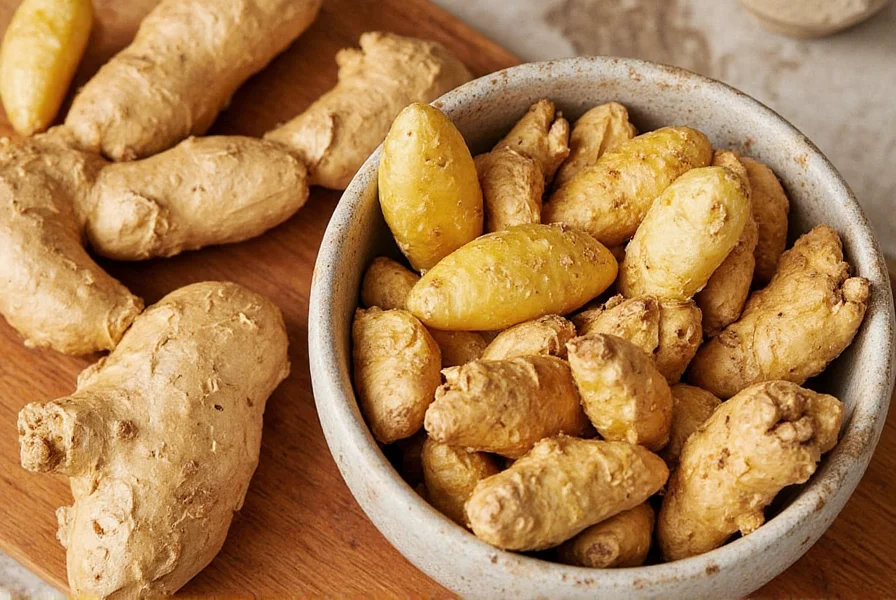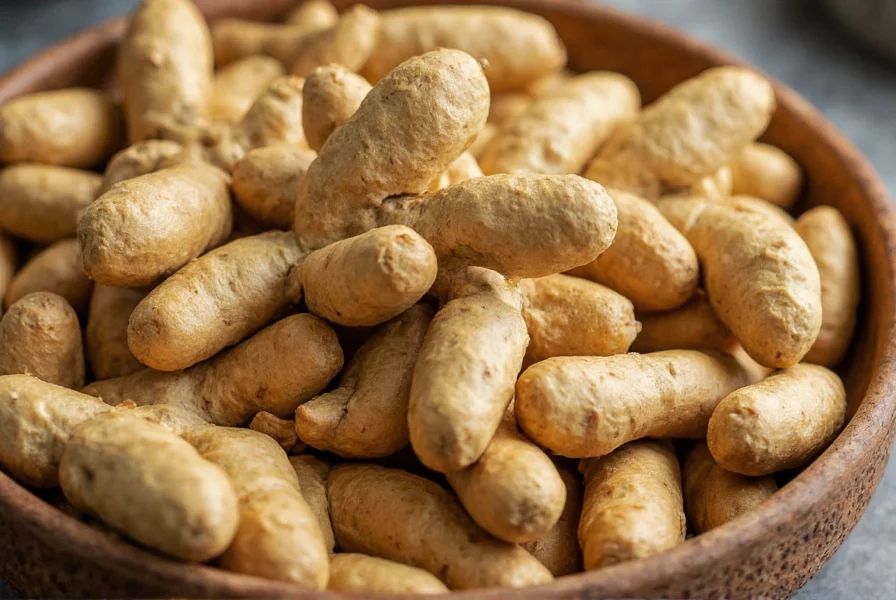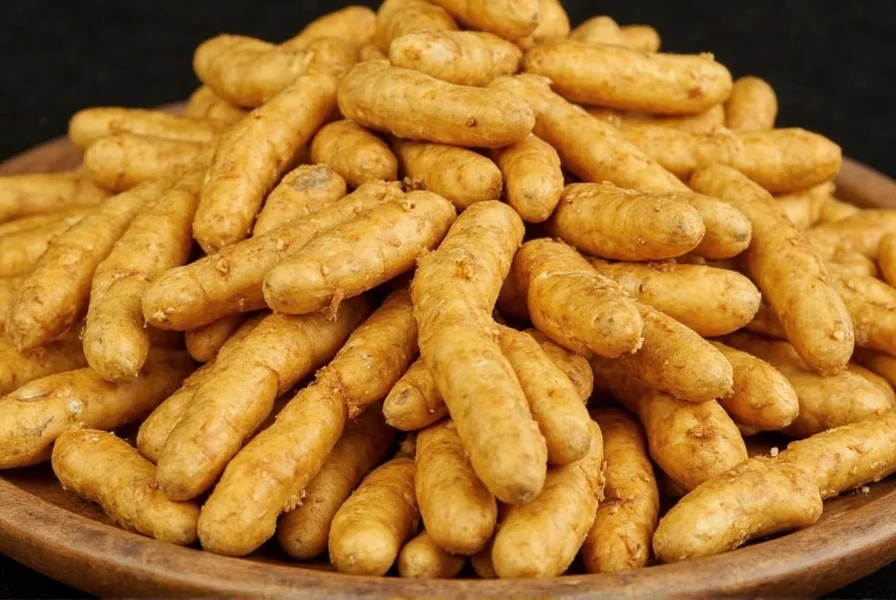For history enthusiasts and culinary anthropologists alike, understanding ancient ginger provides fascinating insights into early human civilization and botanical knowledge. This tropical rhizome wasn't merely a spice but a cornerstone of ancient medicine, trade networks, and cultural practices that shaped societies across continents.
The Southeast Asian Origins of Ancient Ginger
Archaeobotanical research confirms ginger's domestication began in what is now Indonesia and Malaysia approximately 5,000 years ago. The humid tropical climate of Maritime Southeast Asia provided ideal growing conditions for wild ginger varieties that early agricultural societies gradually cultivated. Unlike many spices that spread through later trade routes, ancient ginger cultivation predates written history in this region.
Early evidence of ginger usage comes from linguistic analysis of Austronesian languages, where reconstructed proto-words for ginger appear across island Southeast Asia. This linguistic evidence, combined with residue analysis from ancient pottery shards, establishes ginger as one of humanity's earliest cultivated medicinal plants.
Ancient Ginger in Early Civilizations
The historical journey of ginger reveals how this rhizome became integrated into multiple ancient medical systems. Each civilization developed unique applications while contributing to ginger's global dissemination.
| Ancient Civilization | Time Period | Primary Uses of Ginger | Historical Documentation |
|---|---|---|---|
| Ancient China | 1500 BCE - 220 CE | Medicinal tonic, food preservative, ritual offering | Shennong Ben Cao Jing (first century CE) |
| Ancient India | 1000 BCE - 500 CE | Ayurvedic medicine, digestive aid, religious ceremonies | Charaka Samhita (first century CE) |
| Ancient Egypt | 1550 BCE - 30 BCE | Mummification ingredient, digestive remedy, culinary spice | Ebers Papyrus (1550 BCE) |
| Roman Empire | 100 BCE - 400 CE | Digestive aid, flavoring agent, trade commodity | Pliny the Elder's Natural History |
Archaeological Evidence of Historical Ginger Use
While ginger rarely preserves well in archaeological contexts due to its organic nature, researchers have uncovered compelling evidence of ancient ginger usage through multiple methods. Chemical analysis of residue in ancient pottery from the Yangtze River Valley has identified ginger compounds in vessels dating to 1000 BCE, confirming its early use in Chinese culinary practices.
One of the most significant discoveries came from the tomb of Pharaoh Ramses II in Egypt, where traces of ginger were found among the mummification materials. This finding, dated to approximately 1213 BCE, represents some of the earliest physical evidence of ginger's use outside its native Southeast Asia. The presence of ginger in Egyptian burial practices suggests it held both practical and symbolic importance in ancient Egyptian society.
Historical texts provide additional verification of ancient ginger applications. The Ebers Papyrus, an Egyptian medical text from 1550 BCE, documents ginger's use as a digestive aid and treatment for inflammation. Similarly, the Indian medical text Charaka Samhita (circa first century CE) describes ginger as "the universal medicine" for its wide-ranging therapeutic applications.

Ginger Trade Routes in Antiquity
The historical trade routes of ginger reveal how this valuable rhizome traveled from its Southeast Asian origins to distant civilizations. Ancient ginger became one of the earliest commodities in what would later become the Spice Route network. By 1000 BCE, ginger had reached India through maritime trade networks connecting the Malay Archipelago with the Indian subcontinent.
Chinese historical records from the Han Dynasty (206 BCE - 220 CE) document ginger as a valuable trade item along early versions of the Silk Road, though its primary transportation occurred via maritime routes. Roman merchants later obtained ginger through intermediaries in India, with Pliny the Elder noting in his Natural History that 15 denarii per pound represented a typical price for ginger in first-century Rome—a significant sum equivalent to several days' wages for a laborer.
The high value placed on ancient ginger in Roman markets demonstrates its status as a luxury commodity. Unlike black pepper, which became more widely available later, ginger remained relatively rare and expensive throughout antiquity due to the challenges of transporting the fresh rhizome over long distances.
Traditional Medicinal Applications of Ancient Ginger
Ancient medicinal uses of ginger demonstrate remarkable consistency with some modern scientific understandings. Historical records from multiple civilizations document ginger's effectiveness for digestive issues, nausea, and inflammatory conditions—applications that contemporary research continues to validate.
In traditional Chinese medicine, ancient ginger (specifically dried ginger known as gan jiang) was prescribed for "cold" conditions, including poor circulation and digestive weakness. The Shennong Ben Cao Jing, one of the earliest Chinese pharmacopeias, classified ginger as a superior herb with no toxic side effects when used appropriately.
Ayurvedic medicine in ancient India utilized ginger as a tridoshic herb capable of balancing all three doshas. The Charaka Samhita recommended ginger for improving digestion (agni), reducing joint inflammation, and treating respiratory conditions. Ancient Indian practitioners often combined ginger with other herbs to enhance its therapeutic effects—a practice that continues in traditional medicine today.

Ginger Preservation Techniques in Antiquity
One of the challenges ancient societies faced with ginger was its perishable nature. Historical preservation methods for ginger reveal innovative solutions developed across different cultures. In Southeast Asia, where ginger originated, communities developed techniques for preserving ginger through sun-drying and fermentation that extended its shelf life significantly.
Ancient Chinese texts describe preserving ginger in honey or vinegar, methods that not only extended shelf life but also modified ginger's medicinal properties. The process of pickling ginger in rice vinegar, still practiced in some traditional contexts today, dates back to the Zhou Dynasty (1046-256 BCE).
Egyptian preservation techniques for ginger focused on dehydration and integration with other preservatives used in mummification processes. The combination of drying and exposure to natron (a naturally occurring salt mixture) allowed ginger to maintain some potency during long-term storage—a crucial factor for its use in both medicinal and ritual contexts.
The Enduring Legacy of Ancient Ginger Knowledge
The historical significance of ginger extends beyond its ancient applications to influence modern scientific research. Contemporary studies on ginger's bioactive compounds, particularly gingerols and shogaols, often reference traditional uses documented in ancient texts. This bridge between historical knowledge and modern science demonstrates the remarkable accuracy of some ancient observations about ginger's therapeutic properties.
While modern cultivation has expanded ginger production globally, the core applications documented in ancient times—particularly for digestive health and inflammation—remain among its most scientifically supported uses today. The persistence of ginger in global cuisine and traditional medicine systems represents one of humanity's longest continuous relationships with a botanical medicine.
Frequently Asked Questions
When was ginger first used in ancient medicine?
Archaeological and textual evidence shows ginger was used medicinally as early as 1550 BCE in ancient Egypt, documented in the Ebers Papyrus. In China, ginger appears in medical texts dating to the Zhou Dynasty (1046-256 BCE), while Indian Ayurvedic texts from approximately 1000 BCE describe its therapeutic applications.
How did ancient civilizations preserve ginger for long-term use?
Ancient societies developed several preservation techniques for ginger including sun-drying, pickling in vinegar or honey, and combining with other preservatives like natron in Egypt. Southeast Asian cultures, where ginger originated, perfected fermentation methods that extended ginger's shelf life while maintaining some medicinal properties.
What evidence exists of ginger in ancient Egyptian culture?
Physical evidence includes traces of ginger found in the tomb of Pharaoh Ramses II (1213 BCE), where it was used in mummification processes. The Ebers Papyrus (1550 BCE), an ancient Egyptian medical text, documents ginger's use as a digestive aid and treatment for inflammation, providing written evidence of its medicinal applications.
How did ginger spread from Southeast Asia to other ancient civilizations?
Ginger spread through ancient maritime trade routes connecting Southeast Asia with India by approximately 1000 BCE. From India, it reached the Middle East and Egypt through overland and sea trade networks. Roman merchants later obtained ginger through intermediaries in India, with Pliny the Elder documenting its presence in first-century Rome, though it remained a luxury item due to transportation challenges.











 浙公网安备
33010002000092号
浙公网安备
33010002000092号 浙B2-20120091-4
浙B2-20120091-4